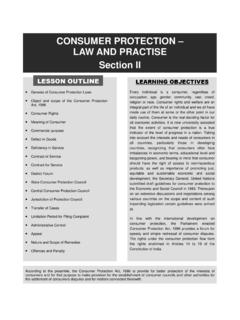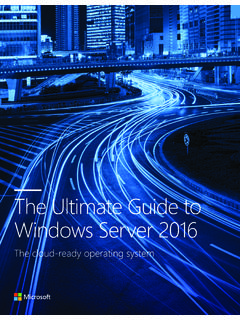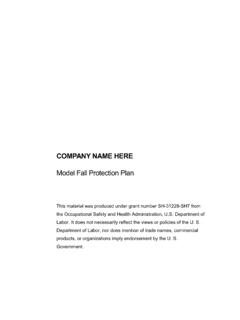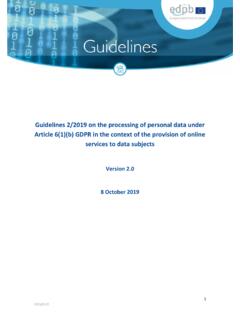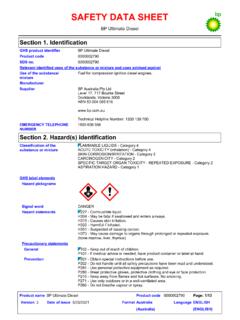Transcription of The Ultimate Guide to Float Level Sensors
1 The Ultimate Guide toFloat Level SensorsElectrical ConnectionElectrical ConnectionThreads upFloatFloat StopFitting with threads downOALL1 Electrical ConnectionElectrical ConnectionThreads upFitting with threads downOALL1L2L3 FloatFloat StopOALL1L2L3 FloatFloat StopA HIGHER Level OF The Ultimate Guide to Float Level Sensors2 Table of ContentsIntroduction ..5 Overview of Level Sensors , their use and selection ..6 The Float switch Level sensor ..7 The continuous Level sensor ..7 Magnetic Float switch reliability ..7 Examples of Level sensor use and applications ..8 Oil/water separators ..8 Food processing equipment.
2 8 Chemical processing and storage ..9 Commercial washers ..9 Container Level indication ..9 Fuel management ..9 Electroplating ..9 Fluid power ..9 Food and dairy ..9 Freon recovery ..10 Humidifiers and dehumidifiers ..10 Lubrication equipment ..10 Marine applications ..10 Miscellaneous ..10 Off-highway vehicles ..10 Industrial parts washers ..11 Power generation ..11 Restaurant equipment ..11 Semiconductor equipment ..11 Solvent Waste oil and grease recovery ..11 Water treatment equipment ..11 Diesel fuel/oil tank and transfer systems ..12 Medical equipment ..12 Heating, ventilation and air conditioning.
3 12 Heavy construction equipment ..12 The Ultimate Guide to Float Level Sensors to select custom liquid Level Float Sensors ..12 What is the desired operation? ..12 What fluid type will you be measuring? ..13 Typical Float switch materials ..13 What is the environment like inside and outside of the tank? ..14 What is your electrical load? ..15 How will the sensor be mounted? ..16 Are there tank restrictions? ..17 Design details and Options ..17 Pipe centering disc ..19 In ..20 Float switch and Level sensor selection checklist ..21 Liquid parameters ..21 Electrical requirements ..22 Mechanical component selection.
4 22-23 Liquid Level Float switch installation Guide ..24 Basic instructions ..24 Installation quick check items ..26 4 20 mA continuous Level Float Sensors ..26 0-5 VDC continuous Level Float Sensors ..27 Maintaining a Float style Level switch ..28 Inspections ..28 Troubleshooting a Float style Level switch ..29 Float is not positioned properly or moving properly ..29 Shock or damage to the floats or the sensor assembly (bent, dented, etc.) ..29 Excessive moisture around the wires exiting the sensor or connections ..29 Reed switch failure ..30 Float s specific gravity does not match the liquid that is being measured.
5 30 Wire colors do not match the Level switch ..30 Troubleshooting a Float style 4-20mA continuous Level sensor ..30 Troubleshooting a Float -style 0-5 VDC continuous Level sensor ..31 Procedure for reversing a Float to change the Normal Switch State ..31A brief history of Float switches .. The Ultimate Guide to Float Level Sensors4 Table of 1: Hazardous location considerations ..33 Condition descriptions ..33 Basics of explosion risks ..33 Sources of ignition ..33 The difference between intrinsically safe and explosion proof ..33 Intrinsically safe equipment ..33 Explosion proof enclosures.
6 34 Intrinsically safe versus explosion proof: Advantages and disadvantages ..35 Designing Intrinsically safe sensor circuits using simple and non-simple apparatus ..36 APPENDIX 2: Understanding electrical ratings of Float switches ..37 Reed switch ratings ..37 Switching Resistive, inductive and capacitive loads ..38 LOAD EXAMPLES: ..38 Resistive load: Resistors, dry contact input, controllers ..38 Capacitive Loads: Lead wires that exceed 200 ft, electrical equipment ..38 Inductive Loads: Relay s, Solenoids, Light bulb ..38 Designing for Inductive loads and Capacitive loads ..38-39 APPENDIX 3: Threaded Connections.
7 40 NPT assembly instructions ..40 How to quickly determine the nominal size of a male NPT thread ..41 How to determine the nominal size of an NPT thread ..42-43 The Ultimate Guide to Float Level Sensors this guideThe main body of this Guide provides information on Float Level sensor technology and its applications. Additional detailed information about several important aspects of Float Level sensor selection and installation is presented in the knowledgeable and experienced staff is always available to provide further information and can be contacted through our website, 1-800-852-9984 Level Sensors are both widely used and highly useful as the first-line input devices for many of today s electronic control systems for monitoring a tank s liquid Level .
8 From simple on / off pump control to highly sophisticated liquid Level indication, Float Level Sensors can be counted on to perform reliable and accurate liquid Level these devices are offered in many variations, almost all fall into two types depending on the output they provide. Switch type Float Level Sensors provide an on or off signal at a specific liquid Level . Continuous Level Float Sensors provide analog data that is continuously updated as the liquid Level note on terminologyThroughout this Guide we will distinguish between these two general types of Float Level Sensors devices by referring to them as Float Level switches, liquid Level switches or Float switches, and continuous Level Float Sensors , or continuous Level Sensors .
9 Some of the other names used to refer to Float Level switches include: multi- Level Float switch, ball Float , magnetically activated Float sensor, liquid Level sensor, and custom Float names that refer to continuous Level Float Sensors include: 4-20 mA (or 0-5 Volt) liquid Level transmitters, 4-20 mA (or 0-5 Volt) liquid Level Sensors , continuous Level sensor, and Float type 4-20 mA liquid Level HIGHER Level OF The Ultimate Guide to Float Level Sensors6 Overview of Level Sensors , their use and selectionThere are several different technologies and categories of Level Sensors . In each category, different types of Level sensing is available.
10 The main categories of Level Sensors are mechanical, electro-mechanical and mechanical Level Sensors include: Float switches Conductivity probes Dip rods Sight glasses Tape levelsCommon electro mechanical Level Sensors include: Float -style continuous Level Sensors Magneto restrictive continuous Level Sensors Resistance tapeCommon electronic Level Sensors include: Ultrasonic Guided wave radar Pressure Sensors Laser sensorsThis liquid Level sensor Guide focuses on Float -style liquid Level switches and continuous Level Sensors . Both types of Float Level Sensors have floats that slide on a stem for accurate switch point measurement or continuous Level measurement and typically are used in industrial applications.
